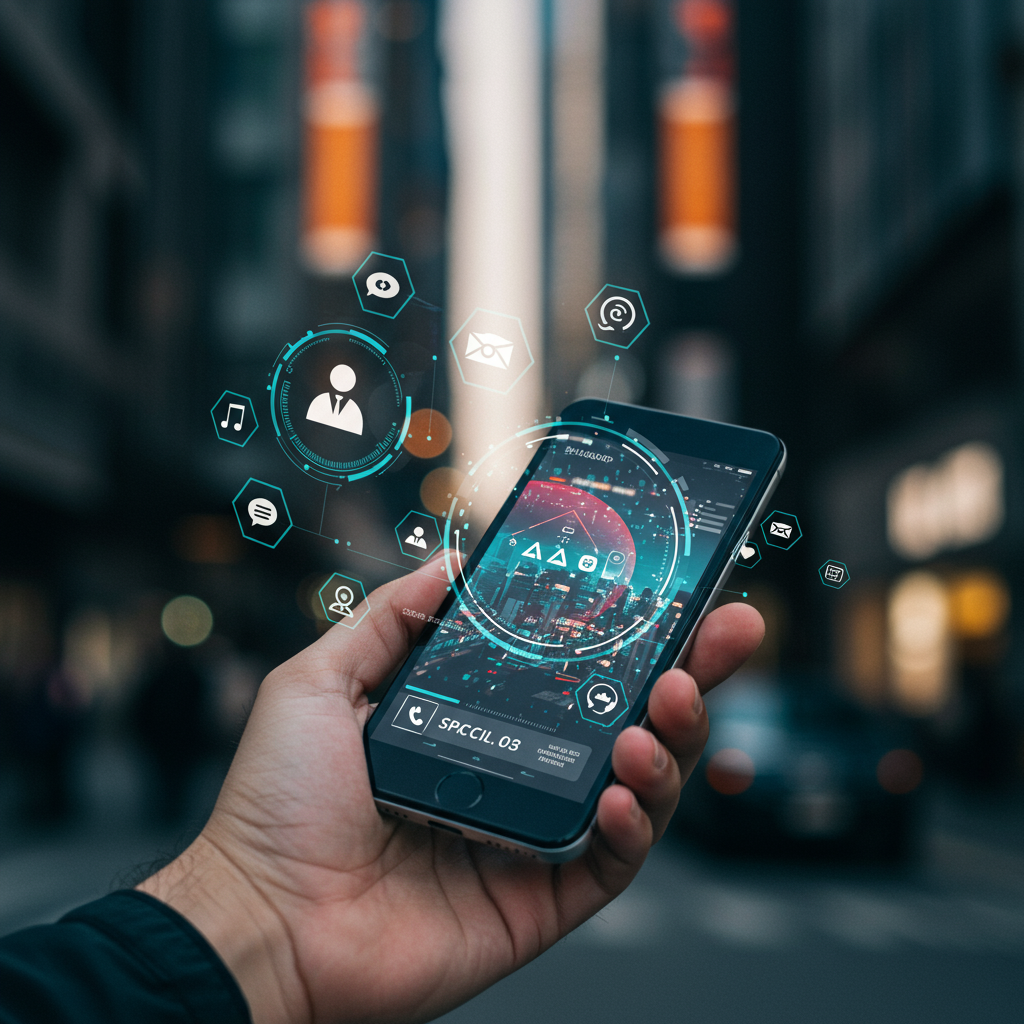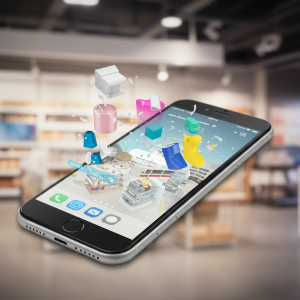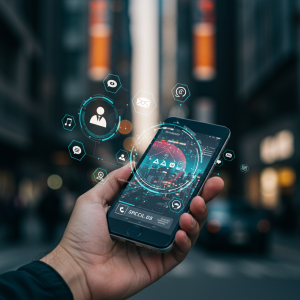Augmented Reality in Mobile Marketing: Strategies, Benefits, and Future Trends

In the rapidly evolving realm of digital marketing, brands must constantly innovate to capture consumer attention. With mobile devices serving as the primary gateway to information, augmented reality (AR) has emerged as a transformative technology that blends digital content with the physical world. By overlaying interactive images, videos, and 3D models onto real environments, AR enables marketers to create engaging experiences that drive deeper engagement, enhance brand perception, and encourage conversions.
What is Augmented Reality (AR)?

Augmented reality is a technology that superimposes computer-generated content onto a user’s view of the real world, typically through a smartphone or tablet camera. Unlike virtual reality (VR), which creates a fully immersive digital environment, AR enhances the existing world by adding interactive layers of digital information. These overlays can include anything from simple text descriptions and static images to complex animations and 3D objects that respond to user interactions. AR experiences on mobile devices rely on advanced hardware components—such as high-resolution cameras, motion sensors, GPS, and powerful processors—to accurately track and render digital elements in real time, creating seamless and contextually relevant experiences. Learn more about AI-Powered Personalization
Key Benefits of AR in Mobile Marketing
- Enhanced User Engagement: By offering immersive and interactive experiences, AR captures attention more effectively than static content, increasing time spent within apps or campaigns.
- Improved Brand Recall: Engaging AR activations create memorable experiences, helping brands stand out and boosting recall during purchasing decisions.
- Interactive Product Visualization: AR allows consumers to visualize products—such as furniture, apparel, or electronics—in their real-world environment before making a purchase, reducing purchase barriers and return rates.
- Data-Driven Insights: AR interactions generate rich user data, including engagement metrics, heatmaps, and interaction patterns, empowering marketers to optimize campaigns and personalize future experiences.
- Competitive Differentiation: Early adopters of AR gain a strategic advantage by positioning their brand as innovative and tech-forward, appealing to modern consumers who value immersive digital experiences.
Effective AR Marketing Strategies
Developing a successful AR marketing campaign requires careful planning and alignment with overall brand objectives. Consider the following strategies to maximize the impact of AR on your mobile marketing efforts:
- AR Product Demos: Create interactive demos that allow customers to virtually try on products—such as glasses or makeup—or preview larger items like furniture within their own homes. This hands-on approach boosts confidence and drives higher conversion rates.
- Location-Based Experiences: Leverage geolocation and mapping technologies to trigger AR content at specific physical locations. Retailers can offer virtual treasure hunts, in-store navigation guides, or location-specific discounts, enhancing in-store engagement and foot traffic.
- Branded AR Games and Filters: Develop entertaining AR mini-games or social media filters that users can share across platforms like Instagram and Snapchat. Branded filters encourage user-generated content and organic reach, expanding brand awareness.
- Interactive Storytelling: Integrate AR into brand narratives by layering digital storytelling elements onto real-world objects or environments. For example, museums can enrich exhibits with historical reconstructions, and publications can add animated infographics to physical print materials.
- Real-Time Personalization: Use AI-driven algorithms to tailor AR experiences based on user data such as preferences, browsing history, or demographic information. Personalized AR activations can significantly increase engagement and foster loyalty.
- Seamless Integration with Loyalty Programs: Reward users for interacting with AR content by linking activations to loyalty or gamification systems. Points earned through AR experiences can be redeemed for exclusive discounts or digital rewards, encouraging repeat engagement.
Case Studies and Examples
Leading brands across industries have successfully harnessed AR to elevate their mobile marketing campaigns. For instance, furniture retailer “IKEA Place” launched an app enabling customers to virtually place true-to-scale 3D furniture models within their homes, reducing uncertainty and boosting online sales. Similarly, makeup brand Sephora’s “Virtual Artist AR” feature allows users to try on hundreds of shades of lipstick and eyeshadow in real time through their smartphones, driving both in-store and online conversions. Meanwhile, automotive companies like Volkswagen have deployed AR brochures that bring car interiors to life on mobile screens, showcasing advanced features in an interactive and immersive manner.
Implementation Best Practices
- Start with Clear Objectives: Define specific goals—such as increasing engagement, driving sales, or enhancing brand awareness—to guide the design and measurement of your AR campaign.
- Ensure Accessibility: Optimize AR experiences for a broad range of mobile devices by providing fallback content for older or less powerful smartphones and ensuring a consistent user interface across platforms.
- Prioritize User Experience: Keep AR interactions intuitive and straightforward, with clear instructions and seamless transitions between the real world and digital overlays.
- Collaborate with Experienced Developers: Partner with AR-focused development teams or platforms that specialize in computer vision, 3D modeling, and spatial tracking to ensure high-quality implementations.
- Maintain Brand Consistency: Align AR visuals, tone, and messaging with your overall brand identity to reinforce brand recognition and deliver a cohesive experience.
- Optimize Performance and Loading Times: Compress 3D assets and fine-tune code to minimize latency and ensure smooth rendering of AR content on mobile devices.
Measuring AR Campaign Success

To evaluate the effectiveness of your AR marketing initiatives, track the following metrics:
- Engagement Rate: Measure the percentage of users who activate and explore AR content versus the total number of campaign impressions or app users.
- Session Duration: Analyze how long users interact with AR features, as longer sessions often indicate deeper engagement and satisfaction.
- Conversion Rate: Track the number of AR users who take desired actions—such as making a purchase, signing up for a newsletter, or sharing content—compared to non-AR users.
- Social Shares and Virality: Monitor how frequently users share AR experiences on social media, which can amplify reach and drive organic traffic.
- Return on Investment (ROI): Calculate revenue generated or cost savings attributed to AR campaigns versus the development and maintenance expenses to assess overall profitability.
Future Trends in AR Mobile Marketing
- Enhanced AI Integration: The fusion of AI and AR will enable hyper-personalised experiences, where machine learning algorithms dynamically adjust AR content based on real-time user behaviour and preferences.
- Social AR Commerce: Social media platforms will increasingly embed seamless AR shopping features, allowing users to try on products, preview purchases, and buy directly within the app.
- 5G-Powered Experiences: With the widespread adoption of 5G networks, AR applications will benefit from higher bandwidth and lower latency, supporting more complex and interactive experiences.
- Wearable AR Devices: As smart glasses and AR headsets become more affordable and mainstream, brands will explore new touchpoints beyond smartphones, creating fully hands-free AR interactions.
- Location-Aware Storytelling: Advances in indoor mapping and spatial computing will enable precise location-based AR content, delivering hyper-contextual experiences in retail stores, museums, and public spaces.
Challenges and Considerations
- Technical Complexity: Building robust AR experiences requires expertise in 3D modeling, spatial mapping, and performance optimization, which can present a steep learning curve for in-house teams.
- Device Fragmentation: Ensuring consistent performance across a diverse range of mobile devices and operating systems can be challenging, potentially limiting the reach of AR campaigns.
- Privacy and Security: Collecting location and visual data through AR applications raises privacy concerns, making transparent data policies and compliance with regulations like GDPR essential.
- High Development Costs: Quality AR experiences often require significant investment in design, development, and testing, which may be prohibitive for smaller businesses.
- User Adoption: Encouraging users to download a dedicated AR app can be difficult; brands may need to explore web-based AR or integrate AR features into existing popular apps to maximize adoption.
Conclusion
Augmented reality is poised to redefine mobile marketing by offering brands unparalleled opportunities to engage, educate, and entertain consumers in immersive ways. By understanding the core benefits, implementing strategic AR activations, and measuring key performance metrics, marketers can harness this technology to differentiate their brand and achieve measurable business outcomes. As AR continues to mature—driven by AI innovations, 5G networks, and emerging wearable devices—forward-thinking brands that invest in well-crafted AR experiences will be best positioned to captivate modern audiences and drive sustainable growth in an increasingly competitive mobile landscape.





